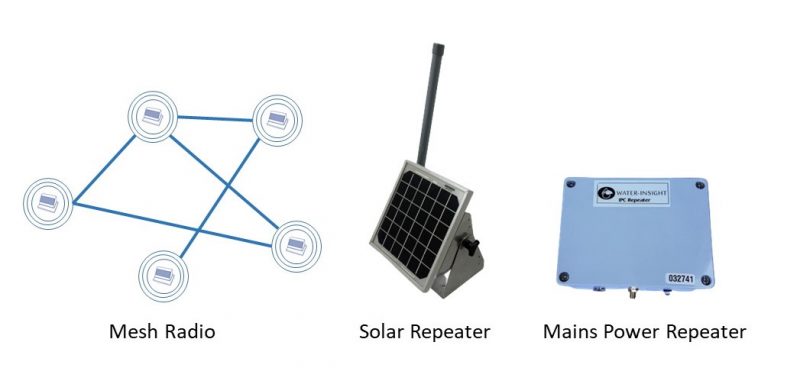These IPC communication options can be combined to provide reliable system communications over challenging terrain.
1) Direct Communication
This is when the IPC can see the antenna of the IMS. This is the preferred communication option but isn’t always achievable on farms with challenging terrain.
2) Mesh Radio
This is used when a small number of IPCs can’t see the IMS antenna but can see other IPCs.
Mesh radio is a powerful capability for system design as it enables messages to be sent over a large area and they “hop” from one IPC to another. The IPCs that can see the IMS would be configured for direct communication and only the required IPCs configured for Mesh radio.
3) Repeater Option
Repeaters are used when groups of IPCs can’t see the IMS antenna or to increase the distance.
Both solar powered and mains powered repeaters are available. The solar powered version has a large solar panel and a 6000mAh battery and is often installed on a fence post facing north. The mains powered repeater is ideal for installing at a dairy shed/building where mains power is available.
Up to four repeaters can be used in a system to reach several difficult areas of the solid set irrigation system.
Which option to choose?
The most appropriate communication method is evaluated and implemented during the IMS system commissioning. Difficult areas, which may require a repeater, are identified during the projects initial RF survey.
By default, we try to communicate with all IPCs in a system with direct communications. The system performance is then monitored and, if required, IPCs are then configured for mesh radio communications.
Further details of the IPC communication types are in the user manual and training presentation.
For maximum flexibility direct, mesh radio and repeater IPC communication options can all be used simultaneously in a Water-Insight system, and are easily changed in the future.

